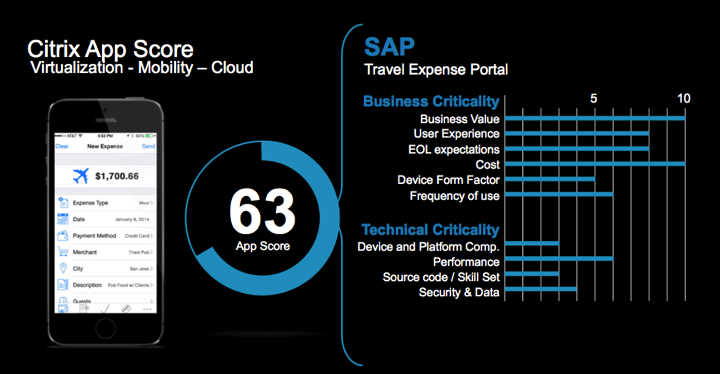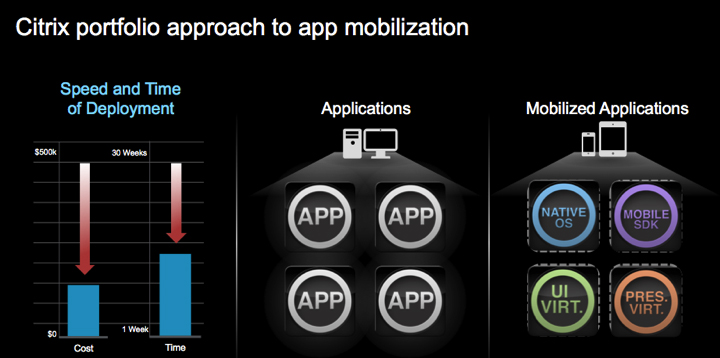On September 24th we kicked off our series of lessons learned from the recent webinar we held with our partner, Citrix. We covered how to set up and execute on an enterprise mobility strategy and how important it is to extend workflow to business mobilization. The next 2 lessons will continue to provide valuable insights and recommendations on how to spring business efficiency forward by way of mobility initiatives.
Lesson 3: Formalize metrics Planning mobility projects can quickly become a complex conundrum for any organization. Some of the questions, which typically arise, are: Which app should be mobilized first? Should all the app functionalities be mobilized or just some of them? How will it be most efficiently mobilized in terms of UI and in terms of technology used? How complex is it going to be?
To help guide this conversation, Citrix has developed an app scoring system that allows a better understanding of the end user point of views through active data collection. It helps measure the business value of the applications vs. the cost of development; it evaluates how important the app is for the business user, how often it is being launched, which parts of the app are being used, on which devices and more. The result is shown in the picture below, it is a score out of 100 and provides formal metrics around business and technical criticality.

Once the scoring is completed, it is then shared with the users, who provide additional insights and comments. This collaboration provides a holistic view of how all the lines of business are using those apps. It can also shade new lights on how to prioritize mobilization of the apps. For instance, instead of mobilizing the entire application, maybe it makes sense to only mobilize part of it. The IT group then can quickly show tangible results to the executives and the end users by accelerating app development and therefore reducing costs. And since this approach is highly user-centric, it dramatically increased the chances of successful downstream adoption.
Lesson 4: Design Portfolio of Roadmap Technology Today, the tendency is to mobilize app on an ad-hoc basic often implying a full rewrite of the applications. The problem with that approach is that it is slow and very costly. Another approach is for the IT team to define what is the best set of technologies to deliver each app based on the app scoring described in lesson 3, and maximize the number of mobilized apps per year. For instance, for an app scoring between 0 and 40, the user experience is not critical, so presentation virtualization could be a great option to quickly get that app out of the door.

The idea is not to prefer one technology to another, just to select the appropriate one to deliver the app rapidly while meeting end users expectations.
The different technologies available are in order of complexity:
- Native OS: a complete rewrite or new development of an application for web mobile devices.
- Mobile SDK: a framework to “re-skin” the application and take advantage of the mobile device features.
- UI virtualization: Translation layer on top of the application UI, also known as “Screen scraping”